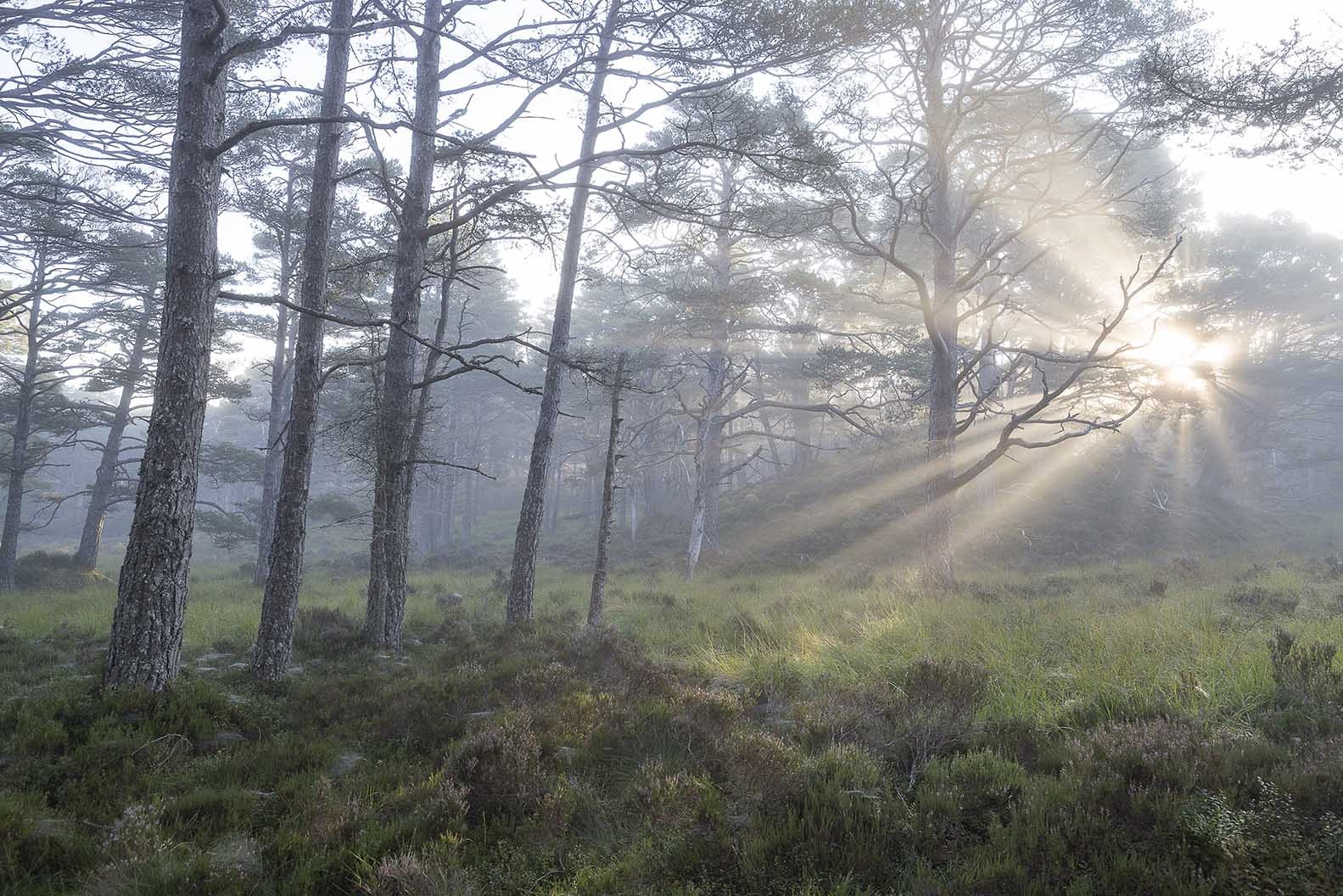

The great Black Wood of Rannoch is a remnant of the ancient Caledonian Forest that once covered much of the Highlands. It lies on the south side of Loch Rannoch and there are marked trails amongst young and ancient pine trees where red squirrels, and many other interesting wildlife can often be seen.
Carie woods adjoin the Black Wood with further Forestry Commission marked trails.
Perthshire is known as Big Tree Country and although not having the largest trees, Rannoch has many fascinating woods of many species, as well as pine, ancient birch trees abound.
There is a very ancient crab apple tree near Jessie Mary's Bay on Loch Rannoch south side.
In the 18th and 19th centuries a few far-sighted landowners realised that trees on their estates were an asset.
Most of these plantings were sited close to the estate houses, generally for amenity and sporting purposes. Corrour Estate, under the laird Sir John Stirling Maxwell (1866–1956), pioneered commercial tree planting on peat. “The result of that experiment led to the successful afforestation of large areas of upland Britain.” So states a memorial to Maxwell, erected at Corrour Forest by the Society of Foresters of Great Britain.
The Forestry Commission, set up as the result of the Forestry Act of 1919, very quickly purchased extensive areas of Rannoch. By 1965, Rannoch Forest at 5400ha was then the largest man-made forest in Scotland. These woodlands are now being harvested and replanted.
There are several other privately owned forests around Rannoch and Tummel, some for harvesting for pulp and timber and others for amenity and shelter for livestock. It makes the area into a beautifully varied landscape.